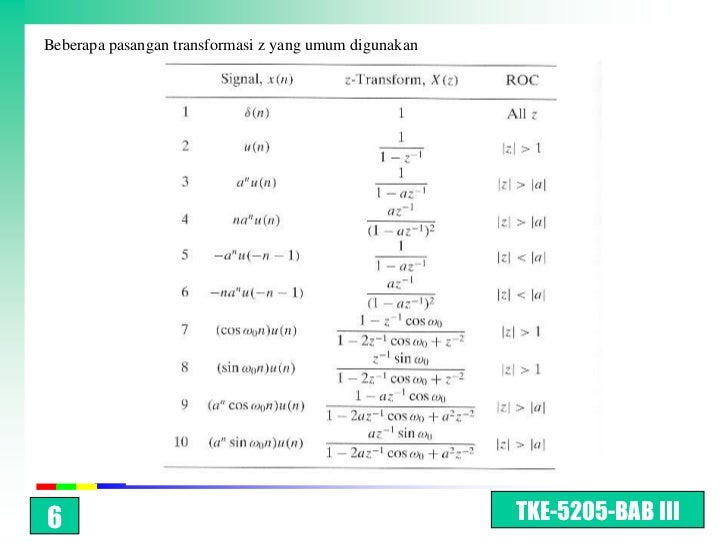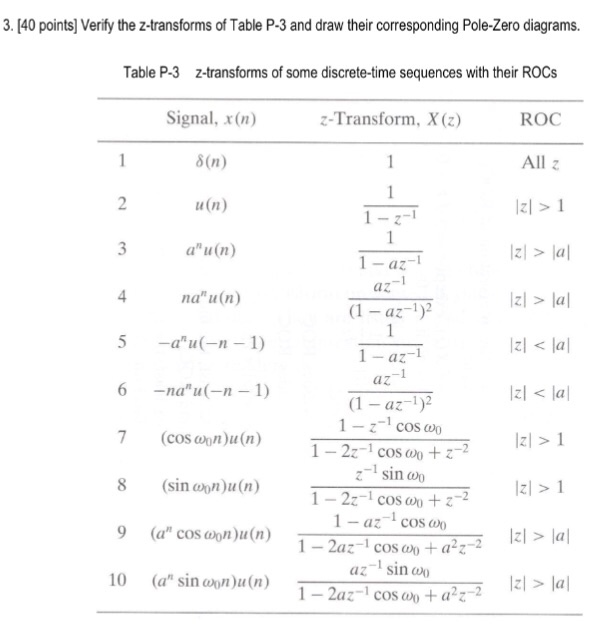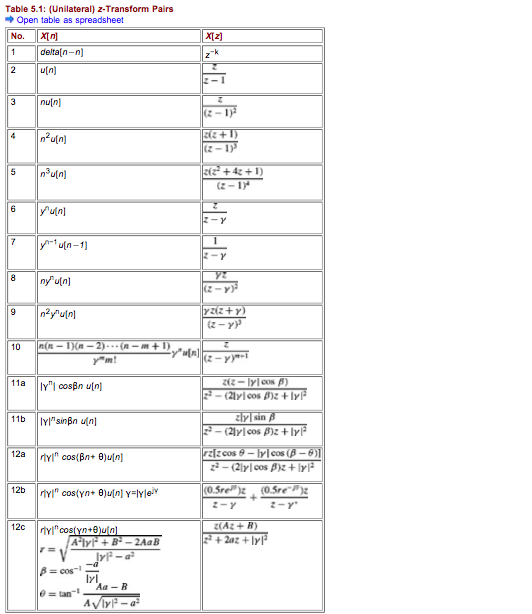

Table of Laplace and Z-transforms X(s) x(t) x(kT) or x(k) X(z) Kronecker delta δ0(k) 1. – – 1 k=0 1 0 k≠0 δ0(n-k) 2. – – 1 n=k z-k 0 n≠k 1 1 3.


Using this table for Z Transforms with Discrete Indices
Shortened 2-page pdf of Laplace Transforms and Properties
Shortened 2-page pdf of Z Transforms and Properties
All time domain functions are implicitly=0 for t<0 (i.e. they are multiplied by unit step).
- Using this table for Z Transforms with discrete indices. Commonly the 'time domain' function is given in terms of a discrete index, k, rather than time. This is easily accommodated by the table. For example if you are given a function: Since t=kT, simply replace k in the function definition by k=t/T. So, in this case.
- Replace each term in the difference equation by its z-transform and insert the initial condi-tion(s). Solve the resulting algebraic equation. (Thus gives the z-transform Y(z) of the solution sequence.) 3. Find the inverse z-transform of Y(z). The third step is usually the most difficult. We will consider the problem of finding inverse z.
| Entry | Laplace Domain | Time Domain (Note) All time domain functions are implicitly=0 for t<0 (i.e. they are multiplied by unit step). | Z Domain (t=kT) |
|---|---|---|---|
| unit impulse | unit impulse | ||
| unit step | (Note) u(t) is more commonly used to represent the step function, but u(t) is also used to represent other things. We choose gamma (γ(t)) to avoid confusion (and because in the Laplace domain (Γ(s)) it looks a little like a step input). | ||
| ramp | |||
| parabola | |||
| tn (n is integer) | |||
| exponential | |||
| power | |||
| time multiplied exponential | |||
| Asymptotic exponential | |||
| double exponential | |||
| asymptotic double exponential | |||
| asymptotic critically damped | |||
| differentiated critically damped | |||
| sine | |||
| cosine | |||
| decaying sine | |||
| decaying cosine | |||
| generic decaying oscillatory | |||
| generic decaying oscillatory (alternate) | (Note) atan is the arctangent (tan-1) function. The atan function can give incorrect results (typically the function is written so that the result is always in quadrants I or IV). To ensure accuracy, use a function that corrects for this. In most programming languages the function is atan2. Also be careful about using degrees and radians as appropriate. | ||
| Z-domain generic decaying oscillatory | (Note) | ||
| Prototype Second Order System (ζ<1, underdampded) | |||
| Prototype 2nd order lowpass step response | |||
| Prototype 2nd order lowpass impulse response | |||
| Prototype 2nd order bandpass impulse response | |||
Using this table for Z Transforms with discrete indices
Commonly the 'time domain' function is given in terms of a discrete index, k, rather than time. This is easily accommodated by the table. For example if you are given a function:
Since t=kT, simply replace k in the function definition by k=t/T. So, in this case,
Z Transform Tables

and we can use the table entry for the ramp
Z Transform Calculator
The answer is then easily obtained